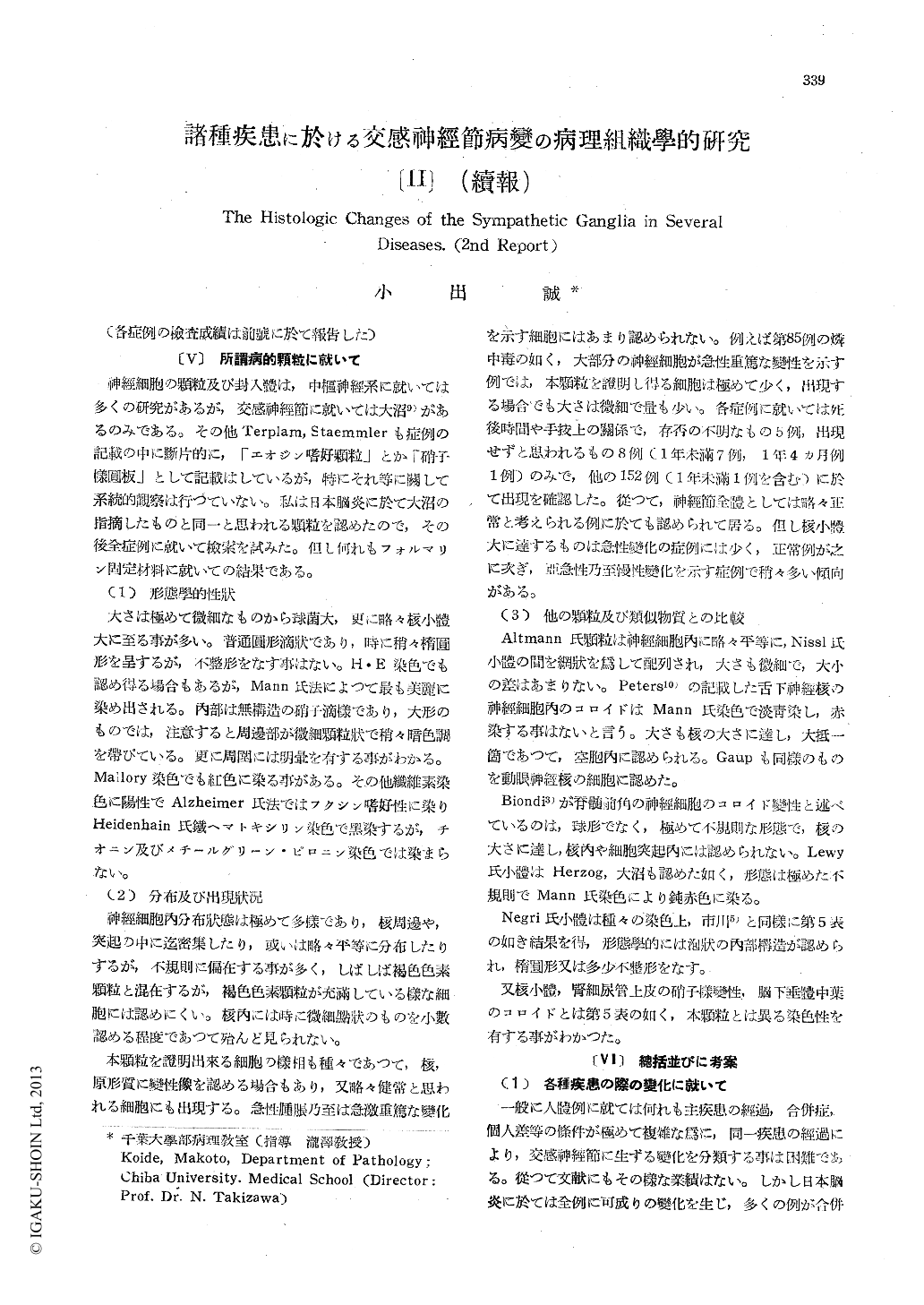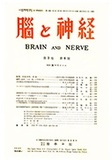Japanese
English
- 有料閲覧
- Abstract 文献概要
- 1ページ目 Look Inside
(各症例の檢査成績は前號に於て報告した)
〔V〕所調病的顆粒に就いて
神經細胞の顆粒及び封入體は,中樞神經系に就いては多くの研究があるが,交感神經節に就いては大沼9)があるのみである。その他Terplam, Staemmlerも症例の記載の中に斷片的に,「エオジン嗜好顆粒」とか「硝子樣圓板」として記載はしているが,特にそれ等に關して系統的觀察は行つていない。私は日本脳炎に於て大沼の指摘したものと同一と思われる顆粒を認めたので,その後全症例に就いて檢索を試みた。但し何れもフォルマリン固定材料に就いての結果である。
(1) 形態學的性状
大さは極めて微細なものから球菌大,更に略々核小體大に至る事が多い。普通圓形滴状であり,時に稍々楕圓形を呈するが,不整形をなす事はない。H・E染色でも認め得る場合もあるが,Mann氏法によつて最も美麗に染め出される。内部は無構造の硝子滴様であり,大形のものでは,注意すると周邊部が微細顆粒状で稍々暗色調を帶びている。更に周圍には明暈を有する事がわかる。Mallory染色でも紅色に染る事がある。その他纎維素染色に陽性でAlzheimer氏法ではフクシン嗜好性に染りHeidenhain氏鐵ヘマトキシリン染色で黒染するが,チオニン及びメチールグリーン・ピロニン染色では染まらない。
Continued from the previeur issue.
I described the common findings of the sym-pathetic ganglia in Ist report. Their process of changing can be thought as follows.
Thosec hanges are caused by the complicati-ons as well as by the main disease of each case. So we must pay attention to analyse the type of the main disease and also its complications, if we intend to understand the pathologic situation of the sympathetic ganglia. Especi-ally we can say so in the cases of pulmonary phthisis and malignat tumor.
The so-coiled pathologic granules in nerve cell of the sympathetic ganglia (Ohnuma) are stained eosinophil by hematoxylin-eosin stain-ing, or Mallory's or Mann's method, and on the other hand fuchsinophil by Alzheimer's method, and lastly react positive to the fibrin-staining. Their size varies from that of very fine mitochondria to that of an erythrocyte.In configuration they look like a rain-drop or assume an oval outline, and it is surrounded by a narrow clear space of protoplasm.
They are distributed in the protoplasm at random.
They also appear in the cells whose nuclei are free from notable changes.
They can be discerned from the other subs-tance of like nature by stainings as follows.
And, they can be discern from Altmann's granule, the colloid described by Peters and Biondi, or Lewy's body etc., in view of the difference of stainability and morphological nature. As the result of the examination of all cases by Mann's method, these granules were noticed in 151 cases, but rarely in cases of infants under one year of age.
Then this pathologic ganule would be just the same as Alzheimer's funchsinophile gran-ule. And it is not peculiar to a specified disease.
When these granules are seen in varying size and particularly include the ones which are larger than a nucleolus among them, situation must be regarded as pathological. However, if those are all very delicate and thinly distri-buted, we could not determin what amount of the sense of the word "Pathologic" is suitable to this case, without more careful scrutiny.

Copyright © 1951, Igaku-Shoin Ltd. All rights reserved.


